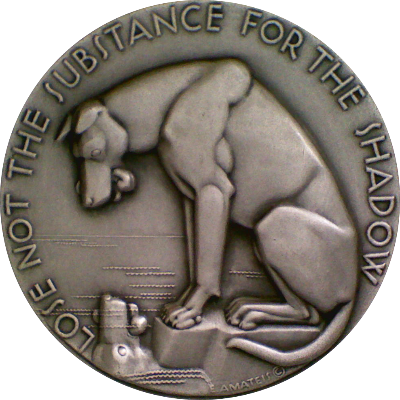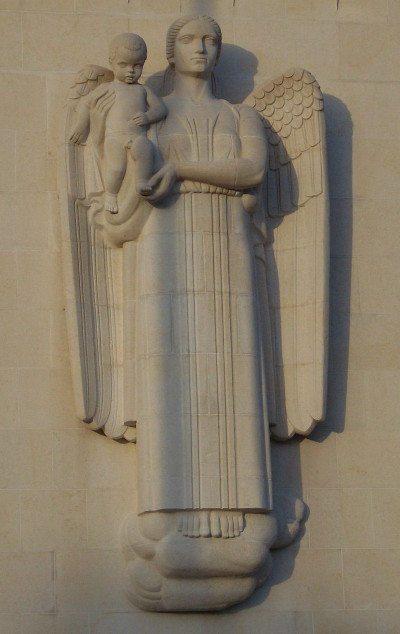Amateis, left-most in the image above, was the son of Louis Amateis (1855−1913), a noted sculptor who had immigrated from Italy in 1883 and became founder of the School of Architecture at George Washington University in Washington D.C. Edmond Amateis received his early education in Washington and took up the study of art at the Beaux-Arts Institute of Design in New York City. His studies were interrupted in 1915, when he served in the United States Army in Europe during World War I.
While in Europe, he spent four months in Paris at the Académie Julian with François Boucher and Paul Landowski as his teachers. When he returned to the United States, he resumed his studies at the Beaux-Arts Institute, combined with work in the studios of Henry Shrady and John Clements Gregory. In 1921 Amateis won the fellowship of the American Academy in Rome for the next three years.
In 1939 Amateis created three bas-relief panels for the Medicine & Public Health Building facing the Thomas Plaza at the New York World's Fair. The panels were called Benevolence, Efficiency, and Humility and depicted scenes from heroes of American folklore. In 1956 Edmond Amateis finished a monumental sculpture for the American Cemetery in Draguignan.
From 1942 to 1944 he was the fifteenth president of the National Sculpture Society. In his later years Amateis lived in Florida, where he developed an interest in the breeding of flowers. A variety of rhododendron is named for him.
Sourced mainly from Wikipedia.













